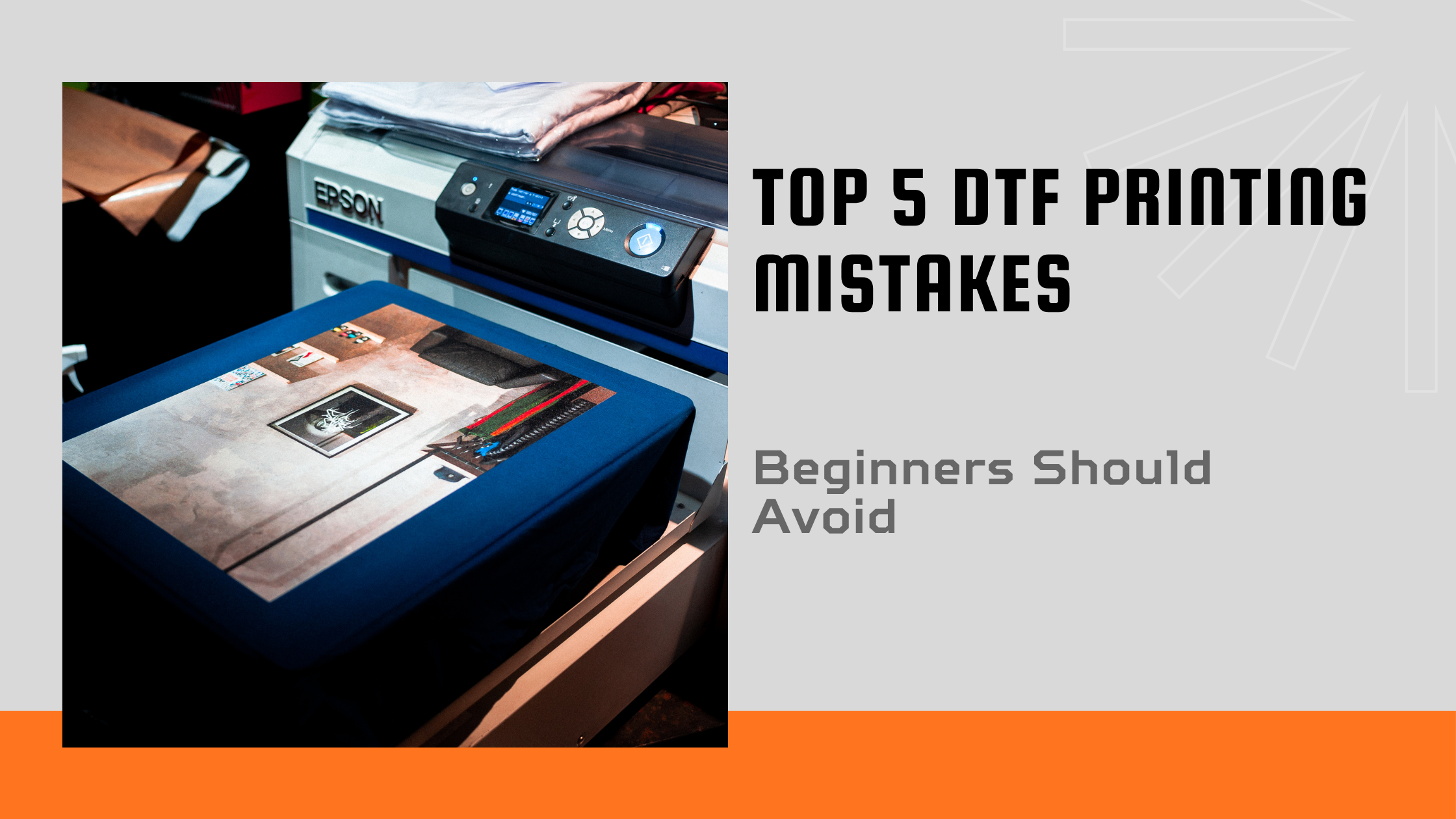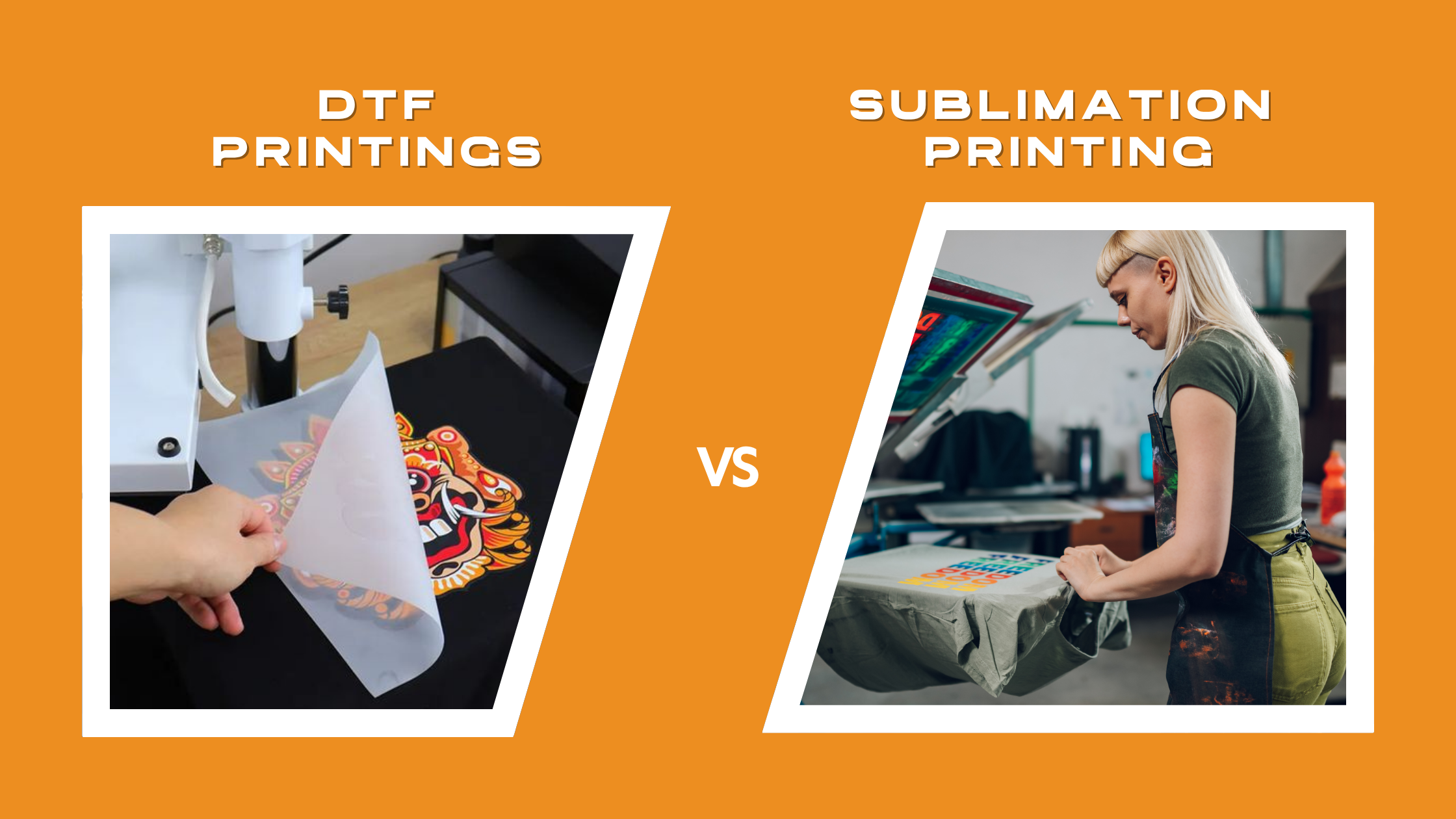Introduction
DTF Printing (Direct-to-Film) has become a favorite method for print-on-demand (POD) businesses. It allows entrepreneurs to create detailed, full-color designs on various fabrics quickly and efficiently.
However, beginners often make mistakes that affect print quality, durability, and customer satisfaction. Avoiding these errors can save time, money, and resources while boosting your brand reputation.
This guide highlights the top 5 DTF Printing mistakes beginners should avoid and provides actionable tips for success.
1. Using Low-Quality Films and Inks
One of the most common mistakes is using cheap or incompatible films and inks.
Why It Matters:
- Low-quality films can cause designs to peel or crack.
- Poor-quality inks lead to faded colors or uneven printing.
- Substandard materials reduce the overall durability of prints.
Tips to Avoid This Mistake:
- Invest in high-quality DTF films compatible with your printer.
- Use certified DTF inks recommended by the manufacturer.
- Test samples before mass production.
Example: A POD brand switched to high-quality PET films and water-based DTF inks, resulting in prints that lasted through multiple washes, increasing customer satisfaction.
2. Ignoring Fabric Compatibility
DTF Printing works on a variety of fabrics, but not all fabrics yield the same results.
Common Mistakes:
- Printing on thick or textured fabrics without testing.
- Using DTF on dark cotton without proper white base or powder application.
- Overlooking blends that require heat adjustment.
Tips to Avoid This Mistake:
- Test prints on each fabric type before full production.
- Adjust heat press temperature and pressure based on fabric.
- Use adhesive powders correctly to ensure adhesion on tricky fabrics.
Industry Insight 2025: Brands offering multi-fabric options are gaining an edge in POD because customers value variety and personalization.
3. Incorrect Heat Press Settings
Improper heat press settings are a frequent cause of poor-quality prints.
Consequences:
- Overheating can cause colors to fade or melt the design.
- Underheating leads to weak adhesion, causing peeling or flaking.
- Uneven pressure results in patchy prints.
Tips to Avoid This Mistake:
- Follow manufacturer guidelines for temperature, pressure, and time.
- Conduct test prints and adjust settings for different fabrics.
- Keep the heat press clean to avoid stains or marks.
Example: A small POD brand improved their production quality by fine-tuning heat press settings for cotton, polyester, and blend fabrics, reducing returns by 40%.
4. Skipping Design Preparation and Resolution Checks
DTF Printing relies on high-resolution designs for detailed results. Beginners often skip this step, resulting in pixelated or blurry prints.
Common Errors:
- Using low-resolution images from the internet.
- Not converting colors to the printer’s profile.
- Ignoring proper file formats like PNG with transparent backgrounds.
Tips to Avoid This Mistake:
- Create or source high-resolution designs (300 DPI or higher).
- Use vector files for logos and simple graphics.
- Convert designs to the printer’s color profile before printing.
Case Study: A POD t-shirt brand doubled their customer satisfaction rate after switching to high-resolution designs, which printed sharply even on small apparel items.
5. Neglecting Post-Print Care and Storage
Even a perfect print can fail if post-print care is ignored. Many beginners overlook proper handling after DTF printing.
Common Mistakes:
- Folding or stacking freshly printed apparel immediately.
- Storing films or finished products in humid conditions.
- Washing apparel too soon after printing.
Tips to Avoid This Mistake:
- Allow prints to cool before stacking or packaging.
- Store printed products in dry, climate-controlled areas.
- Advise customers to wash garments inside out and avoid high heat.
Example: A POD brand saw fewer customer complaints after implementing a cooling and storage process for freshly printed items.
Additional Tips for DTF Printing Success
- Regular Printer Maintenance: Clean the printer head, rollers, and film feed to avoid clogs and misprints.
- Color Calibration: Ensure prints match the intended design by calibrating your printer.
- Batch Testing: Test each batch of ink and film before full production.
- Keep Learning: Stay updated with 2025 trends in eco-friendly inks, new adhesive powders, and hybrid printing methods.
Industry Insight: Brands that invest in consistent quality and proper workflow often outperform competitors in customer loyalty and repeat orders.
Conclusion
Avoiding these five common DTF Printing mistakes ensures high-quality prints, satisfied customers, and fewer returns. Mastering the process also allows POD businesses to scale confidently.
Actionable Takeaways:
- Use high-quality films and inks for durability.
- Test fabrics and adjust settings for each type.
- Fine-tune heat press temperature, pressure, and timing.
- Prepare high-resolution designs and proper file formats.
- Handle post-print care and storage correctly.
By addressing these areas, beginners can achieve professional-quality DTF prints, boost customer satisfaction, and grow their POD business effectively in 2025.




